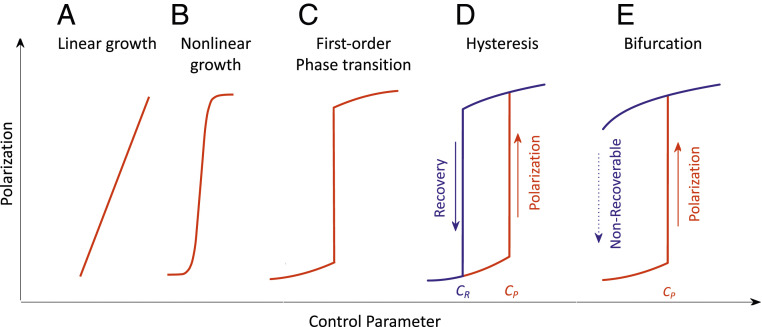Fig. 1.
Schematic of phase transitions. A and B show continuous phase transitions that lack a tipping point. C is a discontinuous knife-edge (first-order) transition that is hard to predict but usually reversible. D illustrates a phase transition with a sudden catastrophic shift between alternative stable states in a hysteretic loop with two different thresholds for forward transition to polarization () and backward transition to recovery (). A reduction in the control parameter to below is insufficient for recovery but a further reduction could eventually allow recovery to occur. In E, recovery is no longer possible, no matter how low the control parameter might go.

